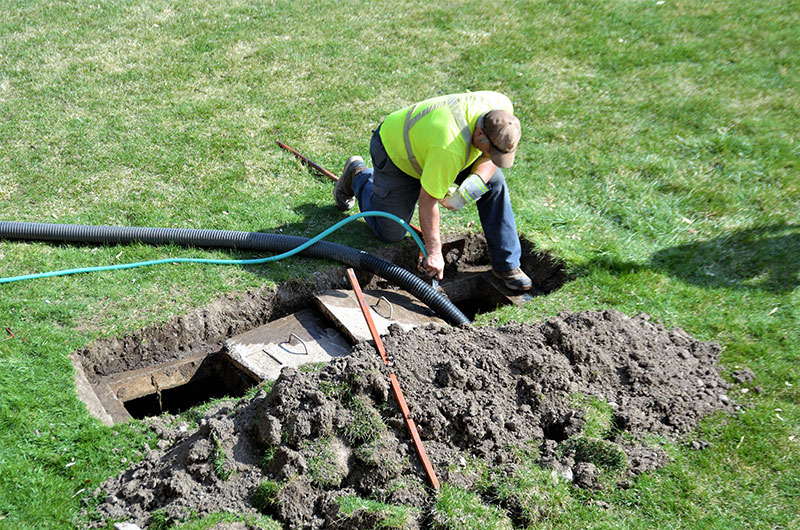As a homeowner, it is important to know the location of your septic tank. This knowledge can help you avoid costly repairs and ensure that your septic system is functioning properly. In this article, we will explore the different components of a septic system, why it’s important to locate your septic tank and four easy ways to find it.
The Importance of Knowing the Location of Your Septic Tank
Knowing the location of your septic tank can save you time and money in the long run. If you are experiencing problems with your septic system, locating the tank can help you determine the cause of the issue.
For example, if you notice sewage backup in your home, you may have a clogged sewer line or a full septic tank. By locating the tank, you can determine if it needs to be pumped or if there is a more serious problem with the system.
Additionally, knowing the location of your septic tank can help you avoid damaging it. If you are planning to install a new driveway, patio, or other landscaping feature, you will want to make sure that you do not dig in the area where your septic tank is located. This can cause serious damage to the tank and the surrounding pipes, leading to costly repairs.
Understanding the Components of a Septic System
Before we dive into the methods for locating your septic tank, it’s important to understand the different components of a septic system.
A septic system consists of three main parts: the septic tank, the drain field, and the soil beneath the drain field. The septic tank is where wastewater from your home is collected and treated. The drain field is where the treated wastewater is released into the soil. The septic tank is typically made of concrete, fiberglass, or polyethylene, and is buried underground. It is usually located between the home and the drain field, but the exact location can vary depending on the layout of your property. The sewer line connects your home’s plumbing system to the septic tank.
Method 1: Checking Your Property’s Blueprint
If you have a copy of your property’s blueprint, you may be able to locate your septic tank on the plan. The blueprint should show the location of the septic tank, drain field, and sewer line. If you do not have a copy of your blueprint, you may be able to obtain one from your local government office or from the builder who constructed your home. Once you have a copy of the blueprint, look for a notation or symbol that indicates the location of the septic tank. The blueprint may also provide measurements that can help you determine the distance between your home and the tank. Keep in mind that the location of the septic tank on the blueprint may not be exact, so you may need to use other methods to confirm its location.
Method 2: Locating the Sewer Line
Another way to locate your septic tank is to follow the sewer line from your home to the tank. The sewer line runs from your home’s plumbing system to the septic tank, so by locating the line, you can determine the general area where the tank is located. To locate the sewer line, start by looking for the cleanout access point. This is typically a small, round cap located on your property near the main sewer line. Once you have located the cleanout access point, you can follow the sewer line to the septic tank. Look for any signs of disturbance in the soil, such as depressions or mounds, which may indicate the location of the tank.
Method 3: Using a Septic Tank Finder Tool
If you are having trouble locating your septic tank using the previous methods, you may want to consider using a septic tank finder tool. These tools use a radio signal to locate the septic tank underground. They are typically easy to use and can save you a lot of time and effort. To use a septic tank finder tool, insert the tool’s probe into the ground at various locations around your property. The tool will emit a signal when it detects the septic tank. Follow the signal to the location of the tank, and mark the spot with a stake or flag.
Method 4: Hiring a Professional Septic Tank Locator
If you are still having trouble locating your septic tank, you may want to consider hiring a professional septic tank locator. These professionals use specialized equipment to locate your septic tank quickly and accurately. They can also help you determine the condition of your septic system and recommend any necessary repairs or maintenance. When hiring a professional septic tank locator, be sure to choose a reputable company with experience in septic system repair and maintenance. Ask for references and check online reviews to ensure that you are working with a qualified professional.
Contact Walley Plumbing Company
If you need help locating your septic tank or if you have any other plumbing needs, contact Walley Plumbing Company. Our team of experienced professionals can help you with everything from septic system maintenance to plumbing repairs. Contact us today to schedule an appointment and discover why we are the top choice for plumbing services in your area.

